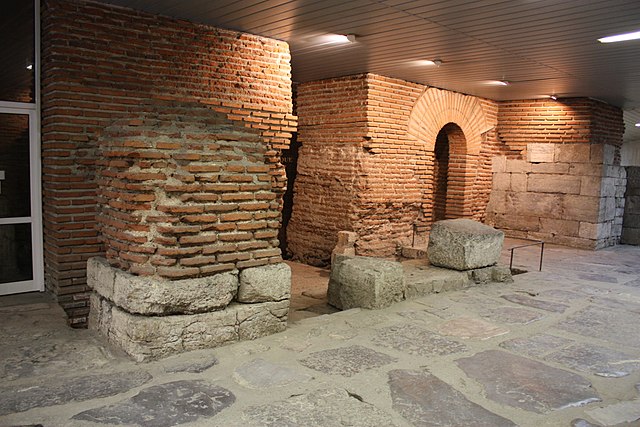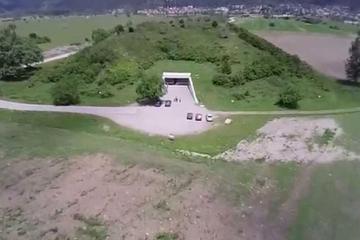
Bulgaria
by Enzo Sardellaro
Bulgaria remains for me a mysterious country, mainly for the charm of its ancient history, where the enigmatic Thracians played a very important and significant role. Since antiquity its strategic geographical location was a natural bridge between Eastern and Western Europe. Bulgaria is a small country with a community of scarcely seven million people living within a territory that is neither too small nor too large. But if its territory is small, its history is very great.
The Greeks and the Romans have left an indelible stain upon the national character and culture of Bulgaria. Many people, different languages and cultures have crossed this territory, nowadays dotted with churches, monasteries and ancient ruins that testify to the rich history of this country. Bulgaria is a real cocktail of mountains, forests, fertile plains, rivers, lakes and hidden valleys where typical villages and ancient monasteries lie hidden within the beauty of the country landscape. The modern seaside resorts and beaches on the Black Sea display a great effect on me as nature lover who appreciates both the comfort and the natural beauty of this country.
 As a history lover, I found several sites of interest, with their unique archaeological heritage. The country is rich in ancient relics, from Neolithic Age to Greek, Roman and Medieval times, the symbol of the ancient grandeur of one of the most well-documented people of antiquity, the Thracians, recognized as one of the most powerful people in the Ancient World. All cities have their own museum with Thracian, Hellenic and Roman treasures of amazing quality and interest, irrespective of many Orthodox churches and monasteries. It is difficult to leave Bulgaria without being held spellbound by its beautiful view.
As a history lover, I found several sites of interest, with their unique archaeological heritage. The country is rich in ancient relics, from Neolithic Age to Greek, Roman and Medieval times, the symbol of the ancient grandeur of one of the most well-documented people of antiquity, the Thracians, recognized as one of the most powerful people in the Ancient World. All cities have their own museum with Thracian, Hellenic and Roman treasures of amazing quality and interest, irrespective of many Orthodox churches and monasteries. It is difficult to leave Bulgaria without being held spellbound by its beautiful view.
The Thracians were an Indo-European people living since Paleolithic in Thrace, a region of indefinite boundaries of the Balkan Peninsula, bounded by the Black Sea and the Aegean Sea, the mountainous region of Sakar, Strandja and the mountain barrier of the Rhodopes. The eastern portion of this area corresponds to European Turkey, while the western area belongs to Bulgaria. In the 6th century BC the Thracians were subdued by the Persians, and then by the Athenians, the Macedonians and finally by the Romans during the 1st century BC.
The Thracians were considered both skilled horsemen and excellent warriors, but they also developed a high level of civilization. They were organized under chiefs or kings as a military aristocracy. The Thracians conquered Bulgaria and settled permanently in it. Several impressive artifacts of the Thracian civilization were found in many archaeological sites of Bulgaria, considered worthy of the tourist gaze. There are a lot of significant Thracian monuments and shrines in the ancient heart of Bulgaria, where the Thracians left us their rich historical and cultural heritage.
Many Bulgarian towns still bear important traces of their Thracian past, such as Kazanlak. Archaeological excavations carried out near Kazanlak, in the famous area of the Rose Valley, discovered substantial remains of tombs, shrines, and other important remnants of Thracian culture. The Odriss Kingdom of the Thraces had its splendid capital at Sevtopolis, ruled by King Sevt III [also known as Seuth], which was submerged and then discovered between the modern Kazanlak and the village of Koprinka. The tomb of King Seuth III was found within the Golyama Kosmatka Mound, near Kazanlak, and it contained a vast treasure including paintings, ornaments, one golden crown, one golden mask and the statue head of the same King Seuth III.
Ludogorie, the region of northeastern Bulgaria, is an area where there is the splendid archaeological site at Sboryanovo, filled with shrines, necropolis and monuments of incredible magnificence and splendor, such as the Sveshtary tomb [first half of the third century BC], with floral decorations which are interpreted as a symbol of fertility . The Sboryanovo reservation is also well-known for its enchanting landscape. Among other things, I visited the Starosel Thracian Tomb, near the village of Starosel, where ancient Orphic rites were practiced by the Thracians in memory of the mythic poet and singer Orpheus. At the time of the Thracians, the Rhodope Mountains were also known as the “Mountains of Orpheus,” where, according to the tradition, Orpheus lived, the most ancient poet of the world, who accompanied the Argonauts in search of the elusive Golden Fleece.

PRIVATE TOUR FROM SOFIA THRACAIN VALLEY
If You Go:
Bulgaria National History Museum, Sofia
Visit Bulgaria website
Bulgaria Wikitravel
History of Bulgaria
About the author:
Enzo Sardellaro is a High School teacher specializing in Italian literature and history. He writes articles about several topics such as politics, society, science, travel and culture (literature, fine arts and history). worldliterature.altervista.org
Photo credits:
Tsarevets fortress in northern Bulgaria by Dennis Jarvis
The ancient Serdika fortress, Sofia by Apostoloff / CC BY-SA





Leave a Reply
You must be logged in to post a comment.